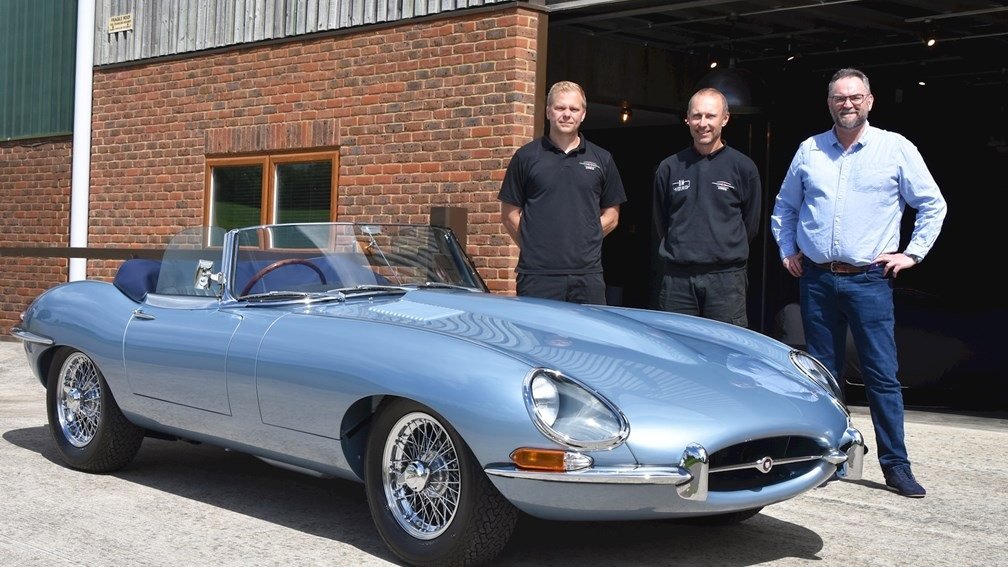Among the pantheon of classic cars, few models inspire as much admiration and devotion as the Jaguar E-Type. Launched in 1961, the E-Type has become a symbol of British automotive design, praised for its sleek lines, powerful performance, and timeless beauty. For collectors, the E-Type is not just a car; it’s an enduring piece of history that represents the golden age of motoring. However, as with all vintage vehicles, time takes its toll, and restoring an E-Type has become one of the most sought-after and rewarding projects for classic car enthusiasts.
A Design Icon That Stands the Test of Time
The Jaguar E-Type’s design was revolutionary for its era. With its elongated bonnet, low stance, and curvaceous body, the car turned heads from the moment it debuted. Enzo Ferrari himself famously called it “the most beautiful car ever made,” a compliment that still holds weight among car enthusiasts today. The combination of beauty and performance made the E-Type a favorite among celebrities and racing professionals alike, solidifying its place as a cultural icon.
For collectors, the appeal of restoring an E-Type goes beyond aesthetics. It’s about preserving a piece of automotive history, where each curve and detail tells the story of the car’s origin. Owning an Vintage E-Type is like holding a piece of art that also delivers thrilling speed and performance on the road.
The Restoration Challenge
Restoring a Jaguar E-Type is no simple task, but that’s part of the allure for many collectors. The car’s intricate design and advanced (for its time) engineering present challenges that demand expertise and attention to detail. From the bodywork to the engine, every component of the E-Type requires a careful approach to ensure authenticity and functionality.
One of the first hurdles in any E-Type restoration is the condition of the body. The car’s sleek, all-steel construction is prone to rust, especially in older models that may not have been stored properly. Repairing or replacing rusted panels can be time-consuming and expensive, but for collectors, it’s a necessary part of reviving this classic. Once the body is restored, the real magic begins—rebuilding the engine, upgrading the interior, and fine-tuning the mechanics to ensure the car performs as beautifully as it looks.
Sourcing Rare Parts
A key part of any restoration project is sourcing the right parts, and for the Jaguar E-Type, authenticity is everything. Collectors are often willing to go to great lengths to find original components, scouring auctions, specialist shops, and even private collections to get their hands on hard-to-find parts. Whether it’s an original XK engine block, a period-correct gearbox, or specific trim pieces, the value of an E-Type restoration often depends on the authenticity of the materials used.
While some restorers opt for modern reproductions or upgrades, the true purists aim for originality. This not only preserves the historical integrity of the car but also increases its value in the collector market. A fully restored, all-original E-Type can command top dollar at auctions, with some models fetching prices well into six figures
Modernizing the Classic
While many collectors aim to keep their E-Types as close to factory specifications as possible, there’s also a growing trend toward restomods—restorations that blend vintage design with modern technology. For an E-Type, this might mean adding electronic fuel injection, upgrading the suspension, or even converting the car to an electric drivetrain.
For some collectors, these modifications enhance the drivability and practicality of the car, making it more suited to modern roads without compromising its iconic look. However, the decision to modernize a classic like the E-Type often comes down to personal preference. Whether keeping it original or adding modern touches, the E-Type remains a dream project for anyone passionate about classic car restoration.
Why the E-Type is a Collector’s Dream
Restoring an E-Type isn’t just about bringing a car back to life—it’s about the entire journey of discovery, craftsmanship, and attention to detail that goes into the process. For collectors, the E-Type offers the perfect combination of beauty, performance, and historical significance. The satisfaction of taking a weathered, worn-down vehicle and restoring it to its former glory is unparalleled, especially when it involves such an iconic car.
Moreover, an E-Type restoration isn’t just an emotional or aesthetic investment—it’s often a sound financial one as well. The value of restored Jaguar E-Types has steadily increased over the years, and they remain one of the most desirable classic cars on the market. As demand continues to grow, especially for fully restored or restomodded versions, collectors know that the time and money they invest in an E-Type can yield significant returns.
Conclusion
The Jaguar E-Type is, without question, a restoration dream for collectors. Its legendary design, rich history, and unparalleled driving experience make it one of the most cherished classic cars in the world. Whether restoring it to original factory specifications or modernizing it for today’s roads, the process of bringing an E-Type back to life is a rewarding journey that celebrates both the past and the future of automotive excellence. For collectors and enthusiasts alike, the E-Type will always be a symbol of beauty and performance that transcends time.
